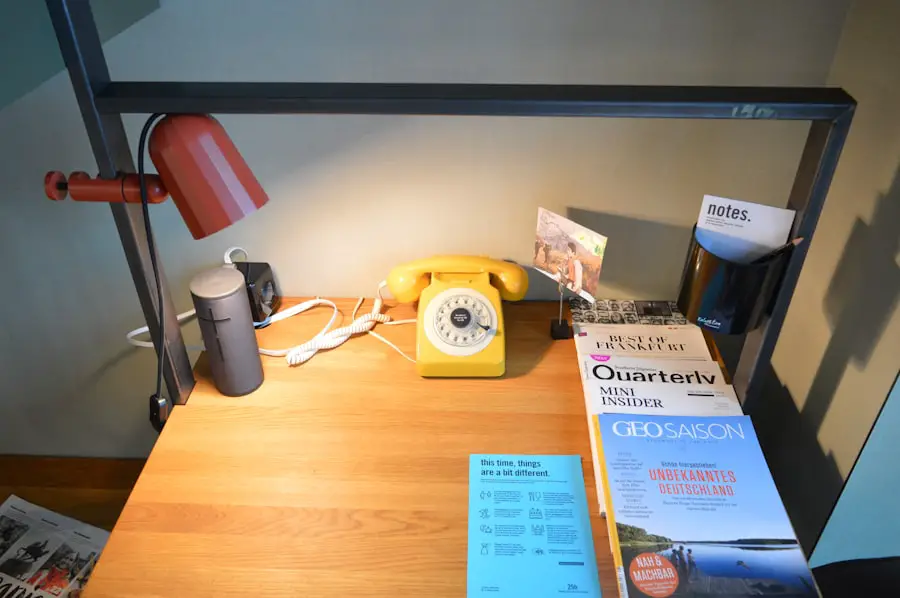As a passenger, it is crucial to be aware of your rights, especially when faced with issues such as flight delays, cancellations, or denied boarding. The rights of airline passengers can vary significantly depending on the jurisdiction and the airline’s policies. In the United States, for instance, the Department of Transportation (DOT) outlines specific regulations that protect passengers.
These regulations include the right to compensation for significant delays and cancellations, as well as the right to be informed about your options in such situations. In the European Union, Regulation (EC) No 261/2004 provides even more robust protections, entitling passengers to compensation for flight disruptions under certain conditions. Understanding these rights is not merely an academic exercise; it can have real-world implications for how you navigate travel disruptions.
For example, if your flight is canceled within a certain timeframe before departure, you may be entitled to a full refund or rebooking on another flight at no additional cost. Additionally, if you are delayed for an extended period, you might qualify for compensation that can cover meals, accommodations, and even financial restitution. Familiarizing yourself with these rights empowers you to advocate effectively for yourself when issues arise.
Key Takeaways
- As a passenger, it’s important to understand your rights in case of flight disruptions or issues with the airline.
- Gather all necessary documentation such as boarding passes, receipts, and any communication with the airline regarding the issue.
- Contact the airline directly to address the complaint and attempt to resolve the issue at the source.
- If the issue is not resolved, consider writing a formal complaint letter to the airline outlining the details of the complaint.
- If the airline does not address the complaint satisfactorily, consider escalating the issue to regulatory bodies for further assistance.
Gathering Necessary Documentation
When faced with a travel disruption, gathering the necessary documentation is a critical step in substantiating your claim. This documentation serves as evidence of your experience and can significantly bolster your case when communicating with the airline or regulatory bodies. Start by collecting your flight itinerary, boarding passes, and any communication from the airline regarding the disruption.
Emails or text messages that confirm delays or cancellations are particularly valuable, as they provide a timeline of events. In addition to these primary documents, keep records of any expenses incurred due to the disruption. This may include receipts for meals, accommodations, or alternative transportation that you had to arrange as a result of the airline’s actions.
If you were traveling for a specific purpose—such as attending a wedding or business meeting—documenting this context can also be beneficial. The more comprehensive your documentation, the stronger your position will be when seeking compensation or lodging a formal complaint.
Contacting the Airline Directly

Once you have gathered all necessary documentation, the next step is to contact the airline directly. Most airlines have dedicated customer service channels for handling complaints and inquiries related to flight disruptions. It is advisable to reach out through multiple channels—such as phone calls, emails, and social media—to ensure that your complaint is acknowledged.
When contacting customer service, be clear and concise about your situation. Provide them with your flight details and a summary of what occurred, along with any relevant documentation. During this interaction, it is essential to remain calm and polite, even if you are frustrated by the situation.
Customer service representatives are more likely to assist you if you approach them respectfully. Be prepared for varying levels of responsiveness; some airlines may have more efficient systems in place than others. If you find that your initial contact does not yield satisfactory results, do not hesitate to follow up or escalate your inquiry within the airline’s customer service hierarchy.
Writing a Formal Complaint Letter
| Metrics | Data |
|---|---|
| Number of Complaint Letters Written | 50 |
| Response Time for Resolving Complaints | 3-5 business days |
| Customer Satisfaction Rate After Receiving Complaint Letter | 85% |
If direct communication with the airline does not resolve your issue, writing a formal complaint letter can be an effective next step. A well-structured complaint letter should clearly outline your experience and specify what resolution you are seeking. Begin by addressing the letter to the appropriate department within the airline—often found on their website—and include your contact information at the top.
In the body of the letter, provide a detailed account of what transpired during your travel experience. Include dates, times, flight numbers, and any relevant documentation that supports your claim. Be specific about how the disruption affected you—whether it caused financial loss, emotional distress, or inconvenience.
Conclude your letter by stating what compensation or resolution you are seeking and express your hope for a prompt response. A formal complaint letter not only serves as a record of your grievance but also demonstrates that you are serious about pursuing a resolution.
Escalating the Complaint to Regulatory Bodies
If your complaint remains unresolved after contacting the airline and submitting a formal letter, it may be time to escalate the issue to regulatory bodies. In the United States, passengers can file complaints with the Department of Transportation (DOT), which oversees airline practices and consumer protections. Similarly, in Europe, passengers can reach out to national enforcement bodies designated under EU regulations.
These organizations have the authority to investigate complaints and may impose penalties on airlines that fail to comply with regulations. When escalating your complaint, ensure that you provide all relevant documentation and a clear summary of your interactions with the airline. Regulatory bodies often require specific information to process complaints effectively, so be thorough in your submission.
Keep in mind that while these organizations can facilitate resolutions, they may not always provide immediate relief or compensation. However, they play an essential role in holding airlines accountable and ensuring compliance with consumer protection laws.
Seeking Legal Assistance

In some cases, pursuing legal assistance may be necessary if all other avenues have been exhausted without satisfactory results. Consulting with an attorney who specializes in aviation law or consumer rights can provide valuable insights into your situation and potential legal remedies available to you. An attorney can help assess whether you have a viable case for compensation based on the circumstances surrounding your travel disruption.
Legal action can take various forms, from sending a demand letter to the airline to filing a lawsuit in small claims court or higher courts if warranted. It is important to weigh the potential costs and benefits of legal action before proceeding; while it may lead to compensation, it can also involve time and financial investment. An attorney can guide you through this process and help determine whether pursuing legal action is in your best interest based on the specifics of your case.
Utilizing Social Media and Review Platforms
In today’s digital age, social media and online review platforms have become powerful tools for consumers seeking resolution for grievances. Many airlines actively monitor their social media accounts and respond quickly to public complaints made on platforms like Twitter or Facebook. Crafting a concise yet impactful message outlining your experience can attract attention from the airline’s customer service team and prompt a faster response than traditional methods.
Additionally, sharing your experience on review platforms such as TripAdvisor or Yelp can inform other travelers about potential issues with an airline while also putting pressure on the company to address customer concerns. When utilizing these platforms, it is essential to remain factual and professional in your tone; emotional outbursts may detract from your credibility. By leveraging social media effectively, you can amplify your voice and potentially expedite the resolution process.
Following up on the Complaint
After submitting your complaint through various channels—whether directly to the airline or through regulatory bodies—following up is crucial to ensure that your case remains active and receives attention. Set reminders for yourself to check in periodically if you have not received a response within a reasonable timeframe. When following up, reference your previous communications and reiterate your request for resolution.
Persistence is key; many complaints may fall through the cracks due to high volumes of inquiries received by airlines and regulatory agencies alike. By demonstrating that you are actively engaged in seeking resolution, you increase the likelihood that your complaint will be prioritized. Additionally, maintaining organized records of all communications will help you stay informed about any developments related to your case and provide context if further escalation becomes necessary.
Navigating travel disruptions can be frustrating and overwhelming; however, understanding your rights as a passenger and taking proactive steps can significantly improve your chances of achieving a satisfactory resolution. By gathering documentation, communicating effectively with airlines, escalating complaints when necessary, and utilizing modern tools like social media, you empower yourself as a consumer in an industry where challenges are all too common.
If you are looking to file a complaint against an airline, it is important to know your rights as a passenger. One helpful article to check out is this one about a scarf with a hidden pocket for travel. This article provides tips on how to stay organized and secure while traveling, which can be useful when dealing with airline complaints. Remember to document any issues you encounter and follow the proper channels to file a complaint effectively.
FAQs
What is the process for filing a complaint against an airline?
To file a complaint against an airline, you can typically do so through the airline’s customer service department. You may also be able to file a complaint with the Department of Transportation (DOT) if the issue relates to a violation of the DOT’s airline consumer protection regulations.
What information do I need to include in my complaint?
When filing a complaint against an airline, it is important to include as much detail as possible about the issue, including your flight information, the nature of the complaint, and any relevant documentation such as receipts or correspondence with the airline.
What are some common reasons for filing a complaint against an airline?
Common reasons for filing a complaint against an airline include issues with flight delays or cancellations, lost or damaged baggage, poor customer service, overbooking, and issues related to refunds or compensation.
What are my rights as a passenger when filing a complaint against an airline?
As a passenger, you have rights under the DOT’s airline consumer protection regulations, which include protections related to flight delays, cancellations, overbooking, and lost or damaged baggage. If an airline violates these regulations, you may be entitled to compensation or other remedies.
How long does it typically take to receive a response to a complaint filed against an airline?
The time it takes to receive a response to a complaint filed against an airline can vary depending on the nature of the complaint and the airline’s internal processes. Some airlines may respond within a few days, while others may take several weeks to investigate and respond to a complaint.
